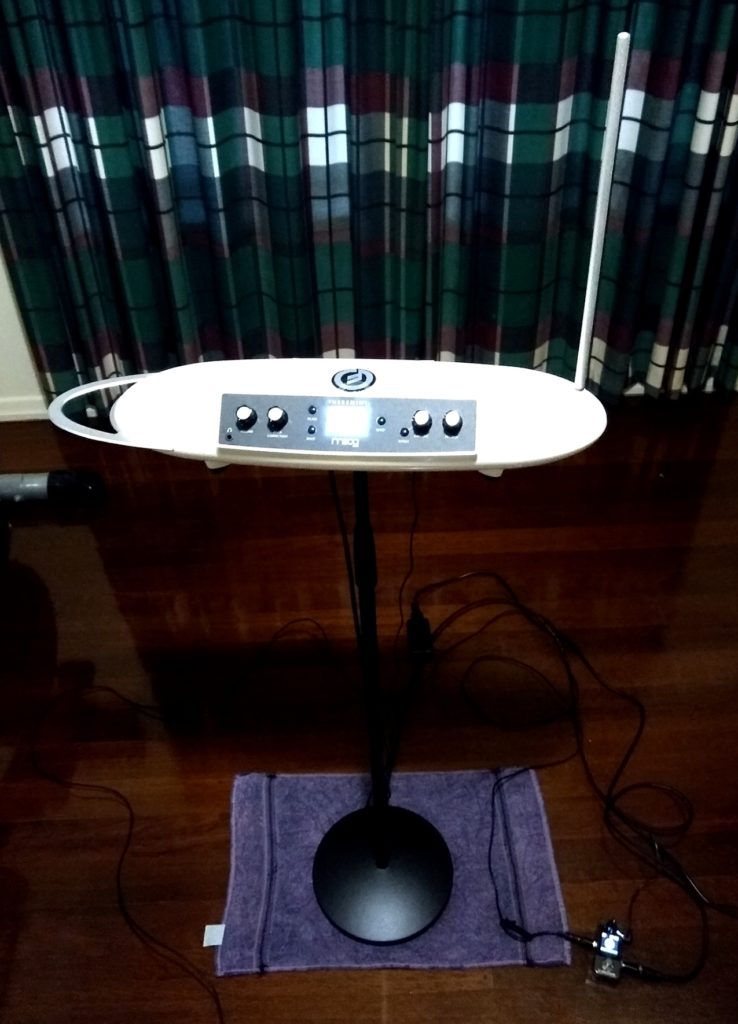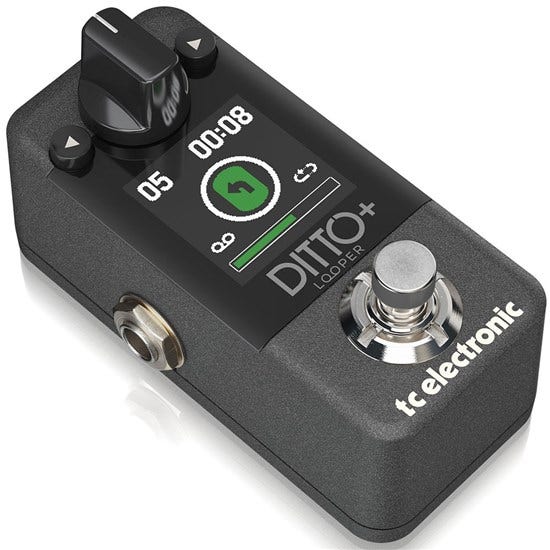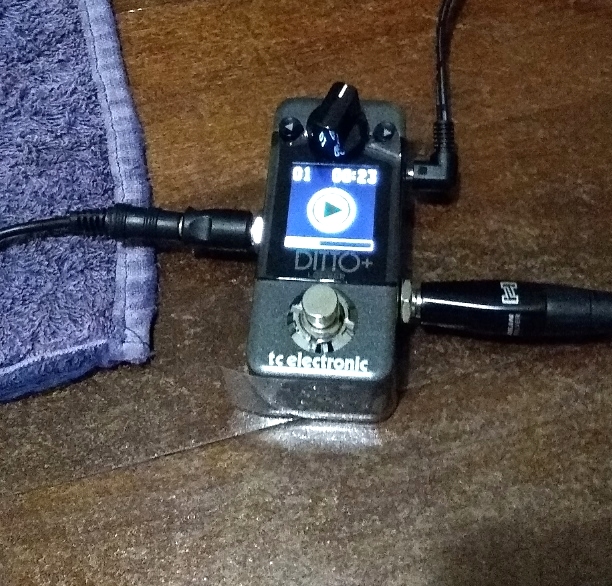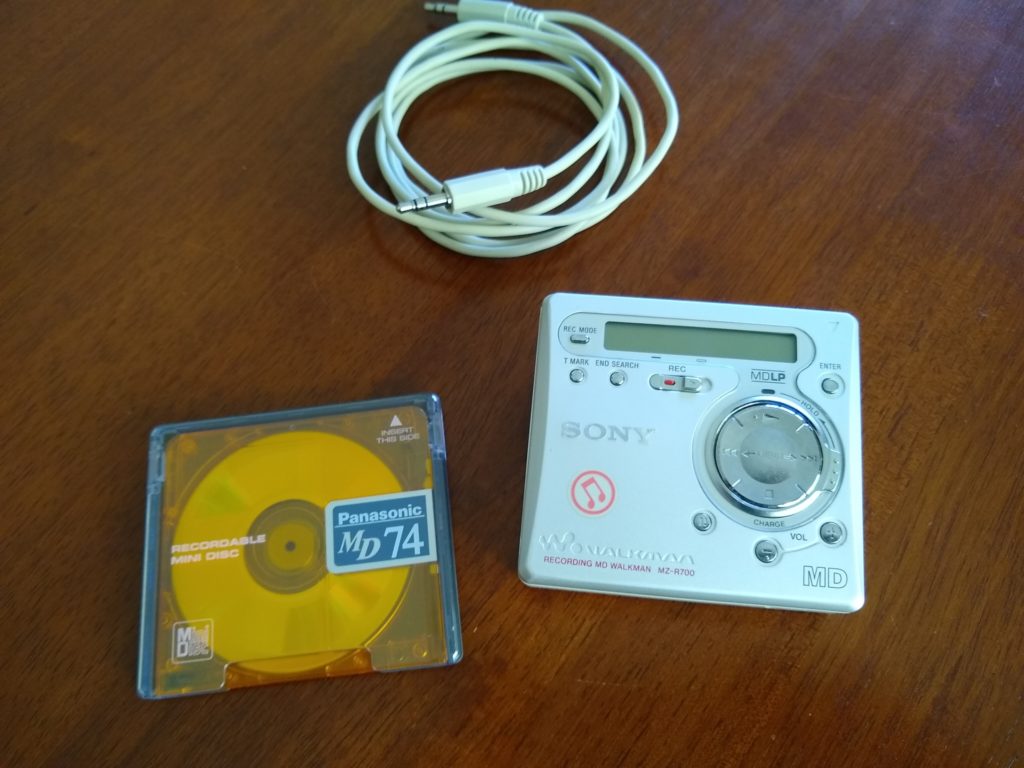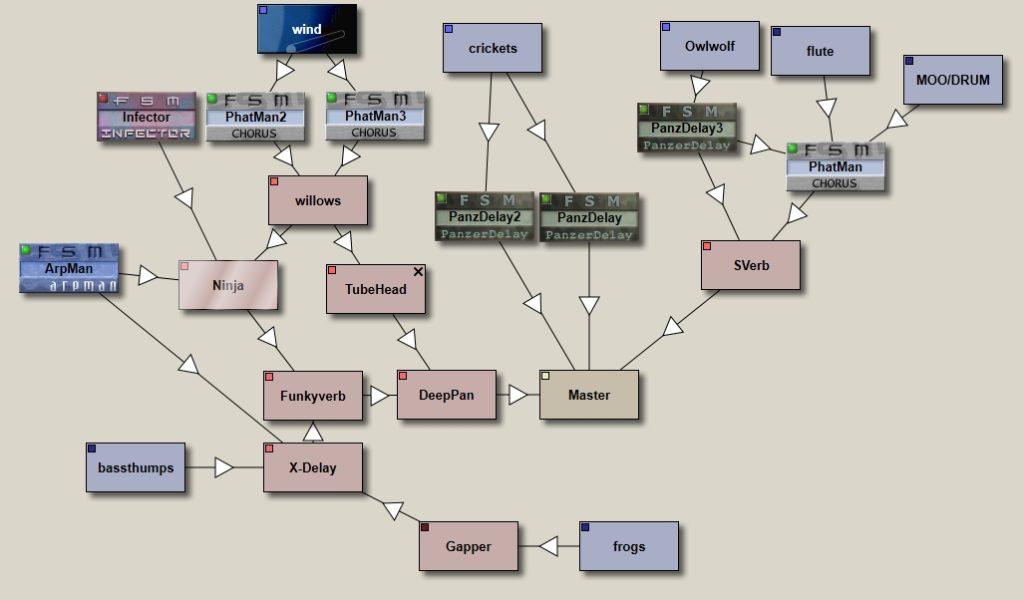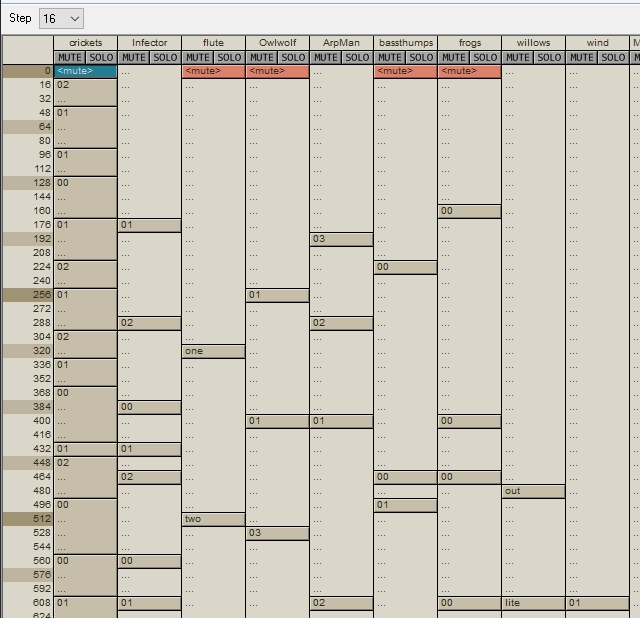The Theremin is different to conventional instruments in that making precise musical notes is one of many challenges you face when playing it. I am a reluctant practiser – I would much rather skip the whole skills acquisition phase and jump straight to the part where I am awesome at it… but that is not how life works sadly.
I have been reluctant to post recordings of my playing because I do not feel I am good enough at pitch control yet, but I decided to commit some time to ‘composing’ and recording an ambient spacescape that showcases the varied synthesiser voices that are available on the Theremini.
For the uninitiated, a Theremini differs from a classic Theremin in that it is a DIGITAL re-work of the original interface – the whole antennae thing on the original is ANALOG – the resulting analog distance from the antenna creates a smooth glissando, and generally only plays one type of noise (or voice), with variations in tone and waveform. A Theremini on the other hand is a full synthesiser (you can create totally new sounds) but uses the antennae to control pitch and volume/effect in a similar way to it’s analog ancestor. The distance from the antennae is sampled digitally, so the glissando can be much more granular.
For this piece, I wanted to get better at using my Ditto+ looping pedal – a foot-driven mono guitar pedal that lets me record and overdub over recordings live. I have been working my way through the Alien movies, and the ambient soundscape interests me greatly – it is a mood setter, so I decided to have a go at making one.
I selected the “lost in fog” preset on my Theremini, and dialed the preset effect back to about 1/4 strength (it is a stereo drift effect, lost on mono capture anyways) and tuned it to Phrygian mode (a “dark” scale). I played with the almost sub-sonic sound until I got a progression I liked and then recorded using it for about a minute, fading volume in, up and down then out at the end.
Next I chose the “Futurewarz” voice (think opening credits to the original Bladerunner movie), also tuned to Phrygian mode, and bumped the effect (a spatial delay) up to about half. This voice is really loud and harsh, so precise volume and pitch control was the aim – a restrained and minimal solo track was laid over the bass hum after much experimentation and pitch-control practise. I did NO post-processing or mixing here. The sound you hear is how it was made on the Theremin.
The result is about a minute of the sort of sound that (to me) resembles Bladerunner on LV-426 (the planet we originally met the Xenomorph in the first and best Alien movie).
Enjoy, tolerate, ignore – your choice:
